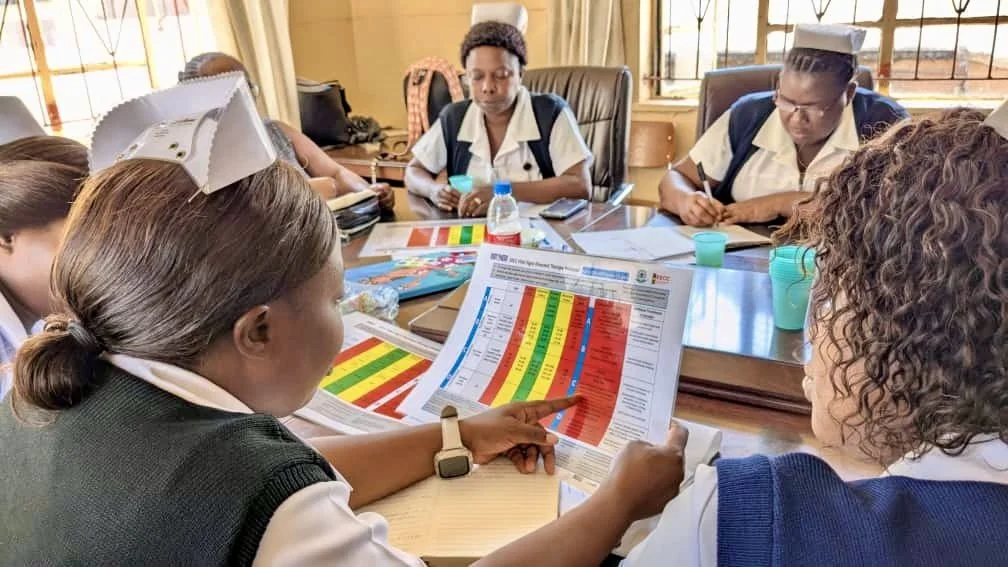Strengthening Care for the Critically Ill in Zambia
At Chikankata Mission Hospital in Zambia, a quiet but meaningful change is underway. Over recent weeks, a team led by Frida Aronsson, an ICU nurse from Sweden, and Armela Khorassani, an anaesthetist also from Sweden, has been working side-by-side with Zambian health professionals to strengthen the hospital’s capacity to care for critically ill patients.
This is Frida’s third visit to Chikankata through Scandinavian Doctors. The focus this time has been on helping the hospital take ownership of Essential Emergency and Critical Care (EECC) — the set of simple, low-cost, life-saving actions that every hospital should be able to provide for all critically ill patients.
Creating EECC Ambassadors
Rather than relying solely on short training sessions, Frida and Armela have taken a new approach. They selected 12 “EECC Ambassadors”, each representing a different department within the hospital — from ICU and paediatrics to the male and female wards.
These ambassadors took part in a three-day, in-depth EECC training, covering the recognition and management of critical illness, the use of vital signs monitoring, oxygen therapy, intravenous fluids, and basic airway care. But more importantly, the sessions focused on how to make EECC last — how to embed its principles into daily hospital routines, meetings, and ward practices.
Ambassadors learning Vital Signs Directed Protocol
“The training was a success,” said ambassadors Mirriam Musune (ICU) and Kesinah Malambo Cheelo (Paediatric Ward). “We acquired knowledge which will help us provide quality care to our patients, especially the identification and management of critically ill patients. We are confident that we will work together with other staff in applying the knowledge we gained.”
From Training to Daily Practice
After the training, each ambassador returned to their department with a clear mission: to keep EECC alive in daily work. Every morning, at handover meetings, ambassadors take a few minutes to remind their teams about EECC and to discuss the patients identified as critically ill. This simple practice — ensuring that the sickest patients are recognised early — is already changing how staff think and act.
Frida and Armela also helped to put up Vital Signs Danger Threshold (VSDT) charts on the walls of the ICU and other wards, so staff can quickly identify when a patient’s vital signs fall into the danger zone and what actions to take.
The results are already visible. One ambassador, Christine Savita from the male ward, shared her experience:
“Yesterday I got a very sick patient to male ward. He had extremely low oxygen saturation and his blood pressure couldn’t be measured. Then it hit me — his saturation is below 90%, that means I should do something according to EECC. So I gave him oxygen and fluids according to the VSDT. And do you know what? Today his vital signs are normal.”
Her story captures exactly what EECC aims to achieve: timely recognition, simple action, and a life saved.
Sustaining Change
Chikankata Mission Hospital is a Level 2 facility with around 200 beds and 65–70 patients admitted on most days. Like many hospitals across sub-Saharan Africa, staff are dedicated but stretched, and resources are limited. Yet by embedding EECC, the hospital is proving that improvements do not depend on high technology or large budgets — they depend on systems, teamwork, and commitment.
Each ambassador now supports colleagues in their own ward, creating a peer-to-peer network that reinforces good practice. Morning meetings now include routine reporting on critically ill patients, helping to build a hospital-wide culture of awareness and accountability.
EECC Ambassadors following their initial training
For Frida and Armela, the six-week placement has been “extremely rewarding,” not just because of what has been taught, but because of what has been learned. “The staff are so active, engaged, and eager to make this happen,” Frida wrote. “They really want EECC to stay.”
Looking Ahead
The progress in Chikankata shows how EECC training can evolve from one-off sessions to a sustained movement within a hospital. By empowering local ambassadors, creating visible reminders like the VSDT charts, and embedding critical illness discussions into daily routines, Chikankata is becoming a model for how EECC can be owned and led locally.
As Frida and Armela prepare to return home, the ambassadors remain — leading, teaching, and applying what they’ve learned. In their hands, EECC is no longer just a training; it’s a way of working that will continue saving lives long after the trainers have gone.


